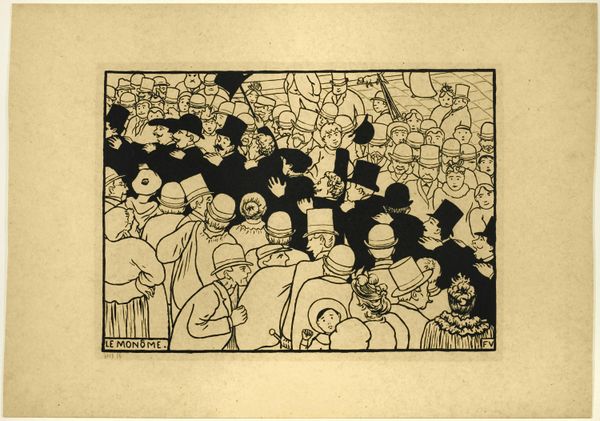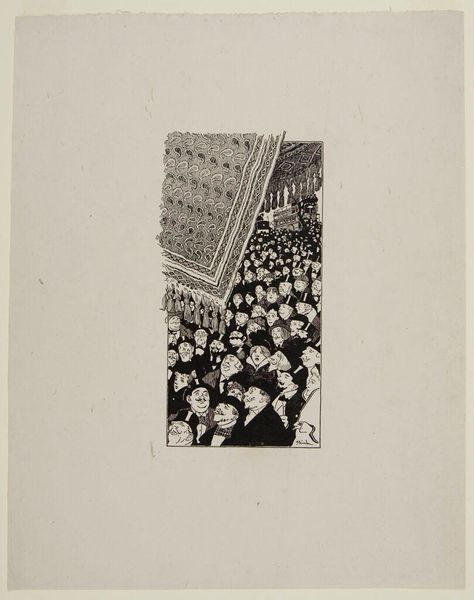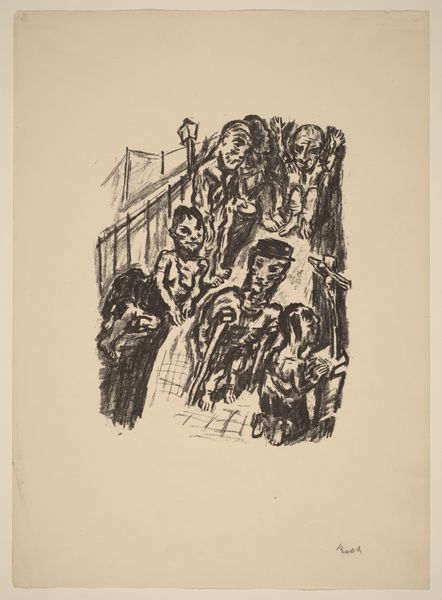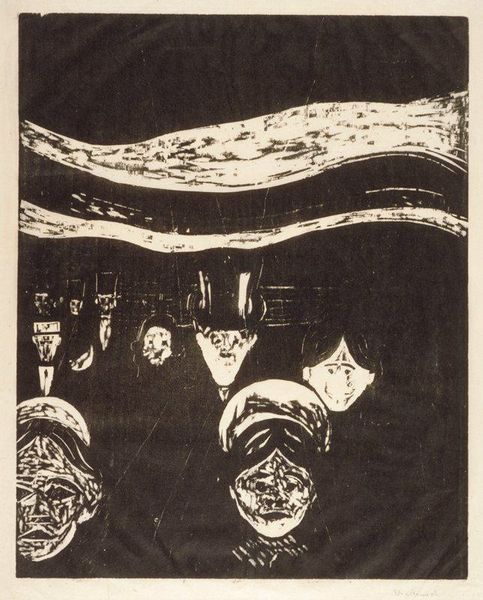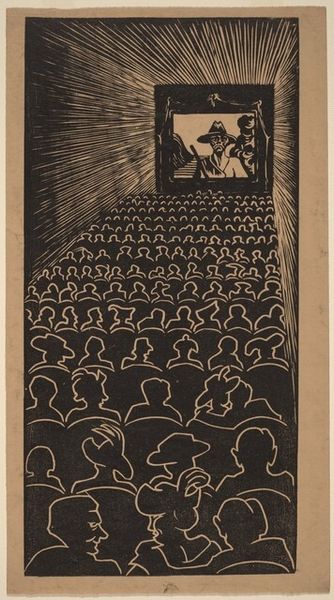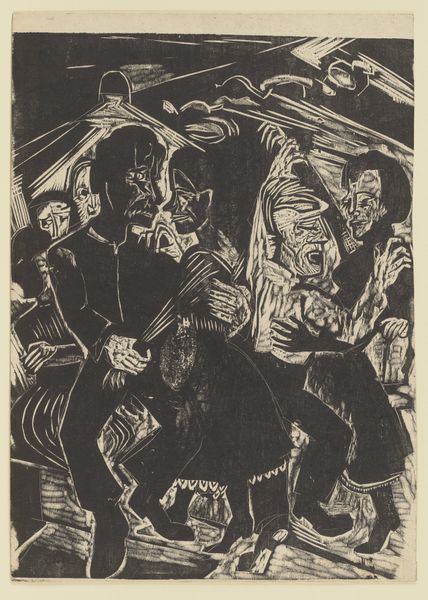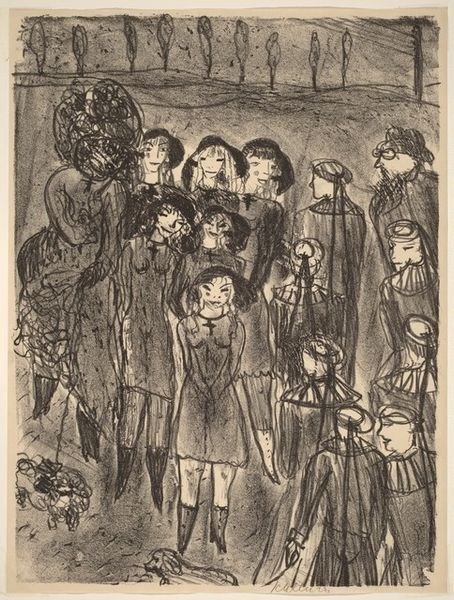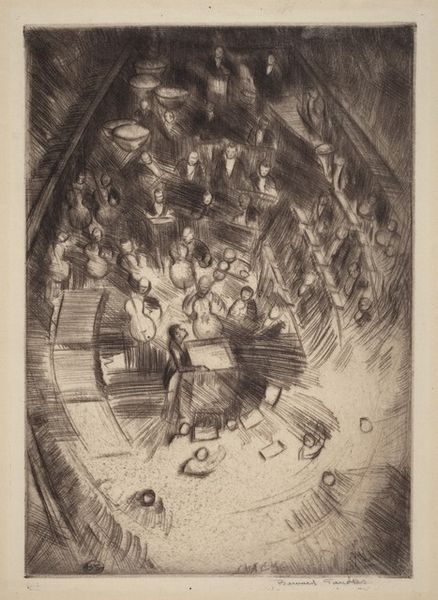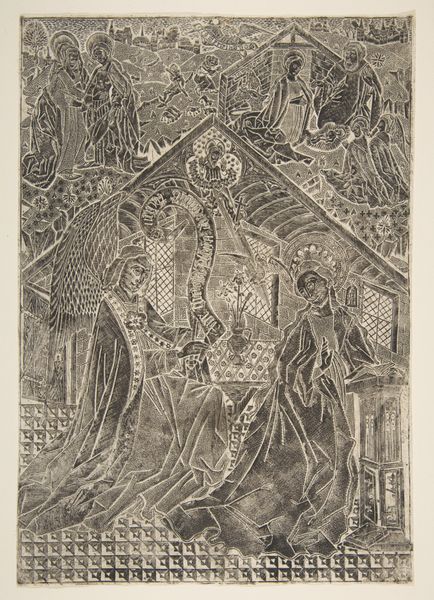
drawing, lithograph, print, ink
#
drawing
#
art-nouveau
#
narrative-art
#
lithograph
# print
#
figuration
#
ink
#
linocut print
#
line
#
symbolism
#
cityscape
#
genre-painting
Copyright: Public domain
Théophile Alexandre Steinlen made this lithograph, Tapis Clichy, using a printmaking process that allowed for mass production. The image is dominated by a patterned rug hanging overhead, with a crowd of upturned faces below, all gazing in the same direction. In lithography, the artist draws on a stone or metal plate with a greasy crayon, and then treats the surface so that ink adheres only to the drawn areas. This method enabled Steinlen to capture fine details, seen in the intricate paisley pattern of the rug and the varied expressions of the crowd. The choice of lithography is significant here. It reflects the growing print culture of the late 19th century, where images could be widely disseminated through newspapers and posters. In this context, Steinlen’s work, though seemingly about a specific event, speaks to broader social dynamics of spectatorship, class, and the democratization of art. The texture and detail achieved through lithography invite us to consider the relationship between mass production and artistic expression.
Comments
No comments
Be the first to comment and join the conversation on the ultimate creative platform.
